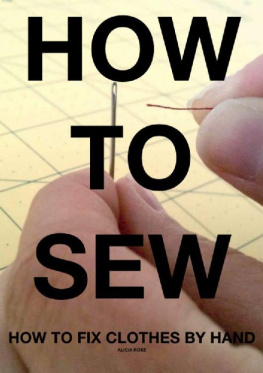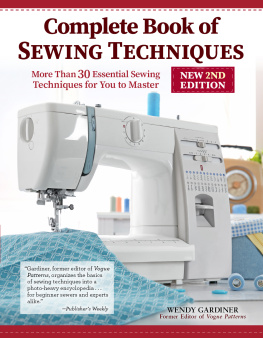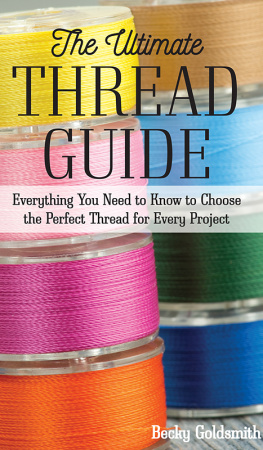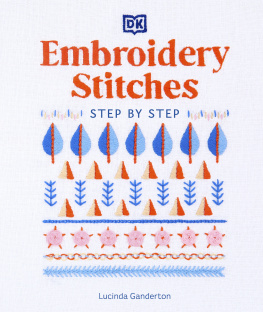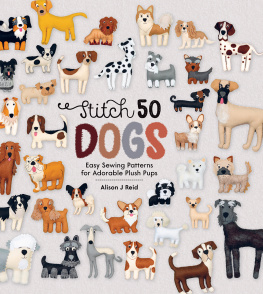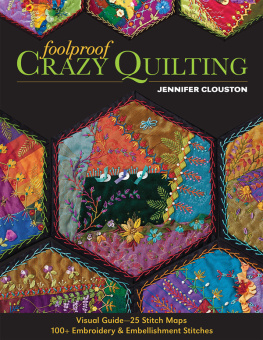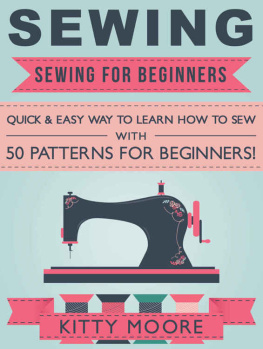
HOW TO SEW
How To Fix Clothes By Hand
Alicia Rose
No part of this publication may be reproduced, stored in a retrieval system or transmitted in any form or by any means without the prior permission of the author.
Alicia Rose
2011
Thank you for purchasing this eBook, to stay up to date on all the latest news visit the website.
http://www.howtosew.info
hello@howtosew.info
Like us: http:www.facebook.com/howtosew
Follow us: http://www.twitter.com/howtosew
Whether we like to admit it or not, clothes are very important to us. The clothes that we wear are a way of expressing ourselves and are a way of letting others know the type of person that we are.
Everything can be given a new lease of life: it may be a favorite shirt that has a tear in it or that expensive jacket that shouldnt be thrown away just because it has lost a button.
Mending clothing is a hugely rewarding task; it turns something old into something new that you fall in love with again.
We all need to reduce out impact on the environment by buying less clothes and mending our existing ones.
Throughout this book red thread has been used to show examples of repairs, stitching and seams, so that the instructions can be easily understood. To view this book in colour please use a Kindle app for the MAC, PC, iPad etc.
TOOLS
The amount of sewing tools available is extensive, but here are the essentials.
Dressmakers Tape measure
A dressmakers tape measure is soft and flexible and has inches measurements on one side and cm and mm on the other.
Needles
Needles tend to come in multi-packs rather than being sold individually and are available in a variety of lengths, widths and sharpness for different uses.
Needle case
Needle cases are used to hold needles when they are not in use. The best types of needle cases are those that have sections that separate the different types of needles. It is a good idea to label each section by writing it on a piece of paper pinned to the different sections.
Pins
It is worth investing money in good quality pins. The cheaper kinds are often short, blunt and damaging to fabric. The best types of pins are those with medium to large sized glass or plastic tops. Not only are they much kinder on fingertips than the pins with small metal flat heads, but also they are easier to find if they are dropped. Try to get the longest pins available and take a look at the ends to make sure that they are really sharp.
Scissors
Fabric scissors vary a lot in size and weight so make sure that they are not too heavy to hold. It is worth remembering that scissors with plastic handles will be much lighter to use than those with metal ones. When choosing what scissors to buy, choose an all-purpose pair that have steel blades. It is a good idea to have a small pointed blade pair of scissors for cutting off loose threads. Never use fabric scissors or cutting anything except fabric, as doing so will make them blunt and shorten their life considerably.
Stitch ripper
Stitch rippers are plastic handled, pointed metal hooks used for ripping stitches and pulling them out of fabric. Make sure that the stitch ripper is sturdy as some stitching can be surprisingly hard to remove.
Tailors Chalk
Tailors chalk is designed specifically to mark lines onto fabrics and is slightly waxier than other chalks. Unlike artists chalk, it comes in a flat triangle shape with narrow edges that enable thinner lines to be drawn. An alternative to using chalk to mark fabric is to use a pen, although be cautious as the pen lines will be permanent and may bleed on the fabric.
Thimble
A thimble is used to protect the finger when hand sewing and is available in various sizes. At first they can feel awkward to wear but in the long run they prevent the tip of the finger from becoming sore.
NEEDLES
Needle sizes generally increase in length and thickness as the size number decreases and are not normally numbered individually, so look at the packet that they are sold in as a reference.
Ball Point Needles
These needles are used for knitted fabrics as they have a rounded point that goes in between the yarns instead of piercing through them.
Beading Needles
These needles are long and thin with a narrow eye so that the whole needle can go through small beads and sequins.
Betweens or Quiltings
These are short needles with a small, rounded shape eye. They are used for detailed sewing and embroidery and the short length of these needles means that you can stitch quickly. They are narrow in width allowing for fine stitches.
Bodkin Needles
These are long thick needles with an elongated eye. They have a ballpoint end and are normally used for threading ribbon or other flat trims such as elastic.
Chenille Needles
These needles have a very sharp point and are thick with a large elongated eye. They are used for embroidery as the eye can hold several strands of thick embroidery thread. The sharp point means that it is easy to stitch through tough fabrics, which are often used as an embroidery base.
Darners
These needles are long and have a sharp point and a long eye. They are used for mending holes (also called darning). Extra long darners are also available and these are used for mending larger holes.
Calyx-eye
These are all-purpose needles and have a slotted top instead of an eye making them very easy to thread.
Embroidery Needles
These are the same length and shape as a standard Sharp needle, but with and elongated eye designed to hold several strands of embroidery thread.
Leather Needles
These needles have a triangular point, which enables them to pass through leather and similar tough fabrics without tearing them.
Milliners Needles
These are similar to a standard Sharp needle but are longer in length. Used in millinery (hat making) but also for pleating, decorative stitches and basting (temporary stitching to keep fabrics in place before permanently stitching)
Sharps
These needles are a medium length and have a round eye and a sharp point. These are the most commonly used needles and are suitable for a variety of projects.
Tapestry Needles
These needles have a large eye and a blunt tip. They are suitable for embroidery and decorative stitching on loosely woven fabrics as the blunt tip passes between the threads of the fabric rather than piercing it and the large eye fits several strands of embroidery thread in it.
THREADS
For hand sewing it is very important to use a higher quality thread, as the smooth surface of it will give better results and is less likely to tangle.
Sewing threads are made from fibers that come from natural or synthetic sources. All threads have a twist in one direction, which is to strengthen the thread and makes it easier to work with.
As a general rule, the thread should be the same fiber as the fabric it is sewn on.
Thread always looks darker on the spool than when it is sewn, so always choose the lighter colour when choosing between two shades.
The thickness of thread required will depend on the fabric. For example a pair of jeans will need a much thicker thread than a silk top will.
Polyester Thread
Polyester threads are generally stronger than cotton and have a sleek, even appearance. They are best used for sewing synthetic fabrics and fabrics with stretch in them.
Cotton thread
Cotton thread is ideal to use for hand sewing, as it is much less likely to tangle than polyester thread. Use it to sew fabrics made from natural fibers like cotton and linen and fabrics with no stretch.
Next page
